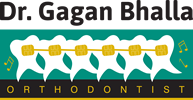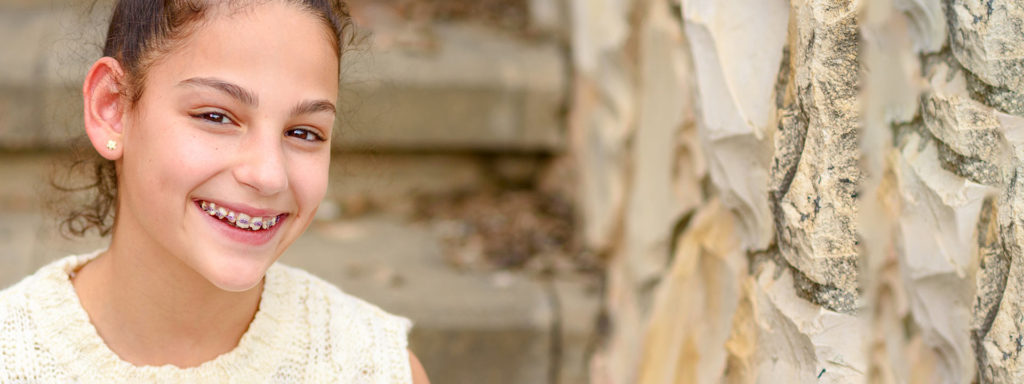Elastics (Rubber bands)
Elastics move the teeth in a direction that cannot be accomplished with braces alone. Your teeth and jaws may be tender for the first few days of wearing the elastics. This is normal and should begin to disappear within a week. If your soreness lasts longer, please call our office. Attaching the elastics to your braces may seem difficult at the beginning. However, with a little time and practice, attaching your elastics will become easy. You must wear must your elastics all the time to be effective – 24 hours a day/7 days a week, unless otherwise indicated. You may remove the elastics only when brushing your teeth. Remember to replace the same elastics immediately afterwards. Part-time wearing of elastics on your braces does NOT move the teeth, but it does cause them to be constantly sore.
Change the elastics routinely even if they are not broken. After a while, elastics for braces lose their strength. Change elastics once a day. If one elastic breaks, replace both sides. Carry extra elastics for your braces with you at all times. If you don’t have enough elastics to last until your next appointment, please stop by our Mississauga office and pick some up, or call us and we can send more to you. We do not want you to run out of elastics. Wearing orthodontic elastics plays an important part in the speed of your treatment and the final results we can achieve. Please call us if you have any questions or concerns.
Headgear
One of the ways we can move your jawbones and teeth is through the use of an external appliance referred to as headgear. It helps us move your teeth in a way that braces alone cannot. The headgear uses the back of the neck or the back of the head and the tension on the appliance to provide force to the teeth to help create a beautiful smile. Your headgear will fit in tubes on the molar bands. Headgear is a removable appliance that is usually worn just during the evening and night-time hours.
In combination with your braces, headgear is used in many ways to redirect jaw growth:
- To move the upper molars back, to fit with the lower molars.
- To hold the upper molars back while the upper front teeth are moved back into position.
When to wear your headgear:
- Patients do not need to wear their headgear to school, work or during active sports.
- It must be worn at least 12-14 hours per day.
- Consistent daily use is essential to achieve success in treatment.
- Never allow headgear to be damaged – never engage in horseplay with headgear on.
What to expect:
- To feel some pressure when the strap is attached to the face bow and relief of the pressure when the strap is detached.
- Your molars to ache and be slightly loosened as tooth movement occurs.
- A band can occasionally become loose. If this happens please call our office for an appointment to have your band re-cemented.
Bring your headgear to each appointment in our office so we can check and adjust it.
Remember: How well you wear your headgear determines how long you need to wear it.
Retention & Retainers
Removing your braces is not the end of treatment, but the start of the retention and observation period of your orthodontic care. This part of your orthodontic treatment is just as important as the active movement phase, when it comes to the ultimate success of your treatment. Once your teeth have been moved into their desired positions, the bone and soft tissue needs to stabilize the teeth and conform to your new dental alignment.
The doctor will still see you or your child periodically in our office after the braces have been removed. This will continue until he feels it is time to graduate from treatment. However, treatment is still not completely finished. It is then the patient’s responsibility to continue to wear their retainer as prescribed. Please call our office if you have any concerns regarding your retainer.
For lasting success from braces and orthodontic treatment:
- Wear your retainer as prescribed.
- Don’t let your retainer get bent or otherwise damaged.
- Call for an appointment if your retainer is damaged or feels loose.
- Keep your retainer clean, brush it regularly.
- Keep your retainer in its case when not being worn.
- Be committed to maintaining your beautiful smile.
RPE (Rapid Palatal Expander)
Rapid Palatal Expander (RPE) is for patients whose upper jaw is narrow. Your Rapid Palatal Expander gently widens the upper arch (palate) by stretching the center palatal connective suture. Once widened, the suture knits together. The RPE is prescribed only when a child or young teen is still growing. A parent or the patient adjusts the RPE daily as instructed, until the palate has been widened enough.
Before the RPE feels comfortable, the patient may expect:
- To feel a tingling or itch under the expander
- To feel a tingling sensation across the bridge of the nose
- To feel pressure in the cheek area
- To see a space appear between the upper two front teeth
- Impaired speech. You can help this by reading a book aloud to practice.
A special key is used to activate the Rapid Palatal Expander:
- Insert the key into the key slot; the key is bent, therefore it will not touch the roof of the mouth
- Push the key all the way from front to back. Look for the next hole to rotate forward. It should show enough so you will be able to place the key into that hole the next time you turn your RPE.
- Remove the key
Remember when brushing:
- Use a proxy brush and a regular toothbrush to clean around the expander
- Brush as usual
- A Waterpik is helpful to dislodge food that gets caught in the RPE
Separators
Separators are usually placed between the molars one week prior to fitting bands (part of braces). The separators may cause slight discomfort for a few hours. They gently wedge the back teeth apart to make it easier to cement the back bands. Do not eat any sticky foods or remove the separators.

